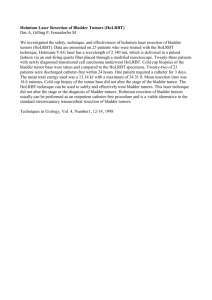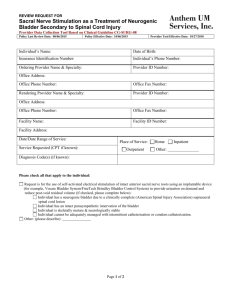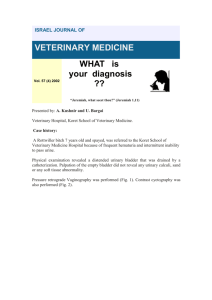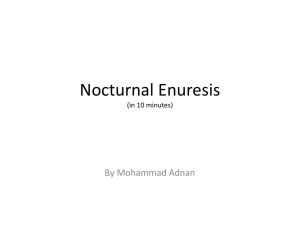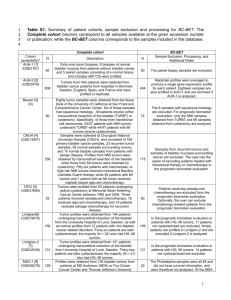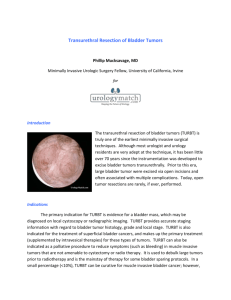Please read the operative and pathology reports
advertisement
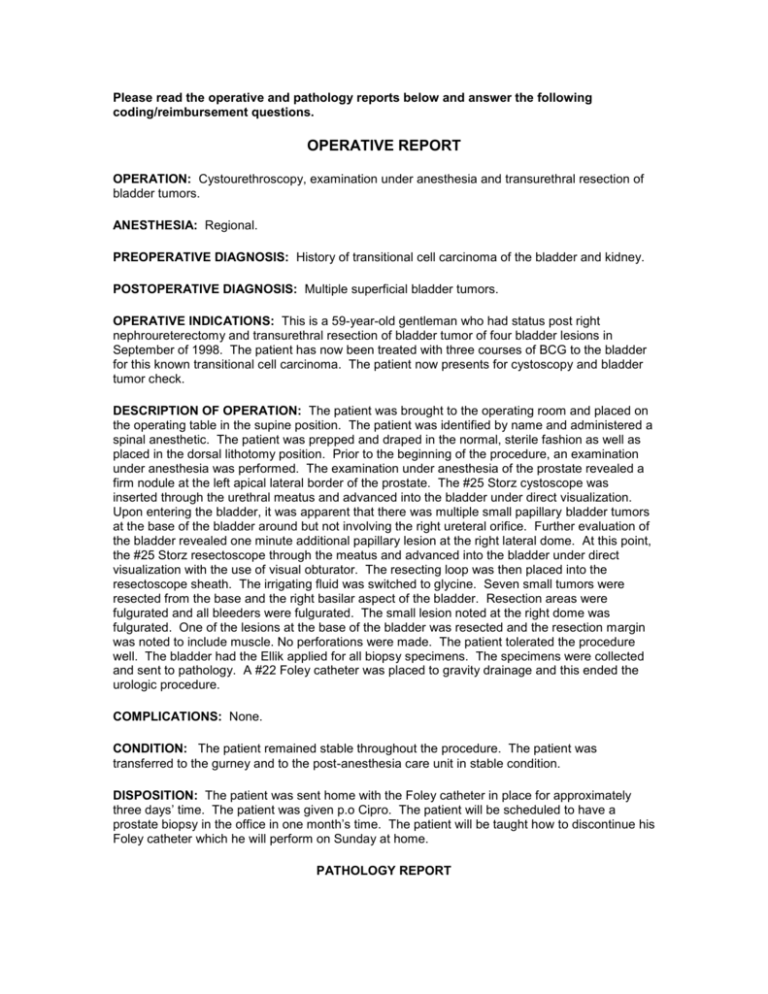
Please read the operative and pathology reports below and answer the following coding/reimbursement questions. OPERATIVE REPORT OPERATION: Cystourethroscopy, examination under anesthesia and transurethral resection of bladder tumors. ANESTHESIA: Regional. PREOPERATIVE DIAGNOSIS: History of transitional cell carcinoma of the bladder and kidney. POSTOPERATIVE DIAGNOSIS: Multiple superficial bladder tumors. OPERATIVE INDICATIONS: This is a 59-year-old gentleman who had status post right nephroureterectomy and transurethral resection of bladder tumor of four bladder lesions in September of 1998. The patient has now been treated with three courses of BCG to the bladder for this known transitional cell carcinoma. The patient now presents for cystoscopy and bladder tumor check. DESCRIPTION OF OPERATION: The patient was brought to the operating room and placed on the operating table in the supine position. The patient was identified by name and administered a spinal anesthetic. The patient was prepped and draped in the normal, sterile fashion as well as placed in the dorsal lithotomy position. Prior to the beginning of the procedure, an examination under anesthesia was performed. The examination under anesthesia of the prostate revealed a firm nodule at the left apical lateral border of the prostate. The #25 Storz cystoscope was inserted through the urethral meatus and advanced into the bladder under direct visualization. Upon entering the bladder, it was apparent that there was multiple small papillary bladder tumors at the base of the bladder around but not involving the right ureteral orifice. Further evaluation of the bladder revealed one minute additional papillary lesion at the right lateral dome. At this point, the #25 Storz resectoscope through the meatus and advanced into the bladder under direct visualization with the use of visual obturator. The resecting loop was then placed into the resectoscope sheath. The irrigating fluid was switched to glycine. Seven small tumors were resected from the base and the right basilar aspect of the bladder. Resection areas were fulgurated and all bleeders were fulgurated. The small lesion noted at the right dome was fulgurated. One of the lesions at the base of the bladder was resected and the resection margin was noted to include muscle. No perforations were made. The patient tolerated the procedure well. The bladder had the Ellik applied for all biopsy specimens. The specimens were collected and sent to pathology. A #22 Foley catheter was placed to gravity drainage and this ended the urologic procedure. COMPLICATIONS: None. CONDITION: The patient remained stable throughout the procedure. The patient was transferred to the gurney and to the post-anesthesia care unit in stable condition. DISPOSITION: The patient was sent home with the Foley catheter in place for approximately three days’ time. The patient was given p.o Cipro. The patient will be scheduled to have a prostate biopsy in the office in one month’s time. The patient will be taught how to discontinue his Foley catheter which he will perform on Sunday at home. PATHOLOGY REPORT FINAL DIAGNOSIS: BLADDER, BIOPSY – PAPILLARY TRANSITIONAL CELL CARCINOMA, GRADE III WITH FOCAL SUPERIFCIAL LAMINA PROPRIA INVASION. Comment: Muscularis propria is focally identified in the biopsy and does not appear to be involved by tumor. SPECIMEN(S) SUBMITTED: BLADDER TUMOR CLINICAL DATA: BLADDER TUMOR. GROSS DESCRIPTION: A. Received in Hollande’s are multiple tan, soft, irregular-shaped segments aggregating to 2.0 x 1.2 x 0.8 cm. Totally submitted. CYTOLOGY REPORT FINAL DIAGNOSIS: URINE INSTRUMENTED: NEGATIVE FOR MALIGNANT CELLS. SPECIMEN(S) SUBMITTED: URINE INSTRUMENTED: (URINE INST) Smears Received: Smears Made: Cytospins: Number of Thin Preps: 1 Cell Blocks: CLINICAL DATA: BLADDER TUMOR. GROSS DESCRIPTION: 120 CC’S YELLOW FLUID.

